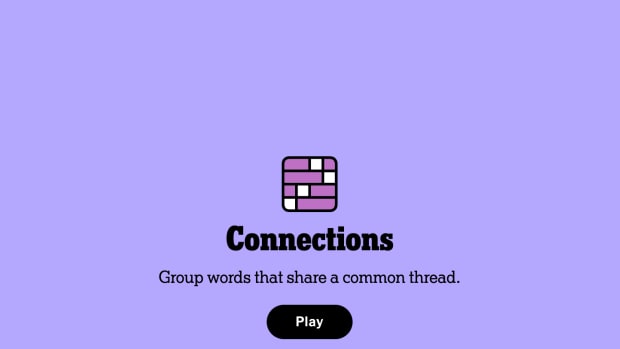For avid puzzle enthusiasts, the New York Times (NYT) Crossword puzzle is a revered challenge, requiring wit, vocabulary, and cunning to conquer. Among its arsenal of brain-teasing offerings lies the NYT Connections puzzle, a delightful twist on the traditional crossword format. As puzzlers embark on this linguistic journey, they often find themselves seeking guidance on how to crack the code. Fear not, for we’re here to unravel the mystery behind NYT Connections, offering insights into hints and answers to aid you on your quest for puzzling prowess.
Understanding the Concept:
At its core, NYT Connections is a puzzle that tasks solvers with identifying pairs of related words or phrases. Unlike the traditional crossword, where each square is a discrete clue, in Connections, groups of two are linked together in a thematic manner. These connections can range from synonyms and antonyms to wordplay and pop culture references, challenging solvers to think laterally and make unexpected associations.
Deciphering the Hints:
Hints in NYT Connections are designed to nudge solvers in the right direction without giving away the entire solution. They often provide subtle clues or context to help unravel the connection between the paired words or phrases. Understanding the hint requires a keen eye for detail and an adeptness at spotting patterns.
For instance, a hint might be “Hot” and “Cold,” suggesting a connection based on temperature. Alternatively, it could be “Batman” and “Robin,” indicating a dynamic duo from pop culture. The key is to analyze the hints carefully and consider multiple interpretations before arriving at the correct answer.
Cracking the Code:
Once armed with a hint, solvers must then identify the connection between the paired words or phrases. This requires creative thinking and a willingness to explore various avenues of association. Sometimes, the connection may be straightforward, while other times, it may require a deeper dive into linguistic nuances or cultural references.
For example, given the hint “Sun” and “Moon,” the connection could be celestial bodies or symbols of day and night. However, it could also refer to a literary motif or a metaphorical representation of opposites. The key is to approach each pair with an open mind and consider all possible interpretations before settling on the answer.
Strategies for Success:
While cracking the code of NYT Connections may seem daunting at first, there are several strategies that can help solvers navigate the puzzle with ease:
- Think Outside the Box: Don’t limit yourself to literal interpretations of the hints. Explore figurative, metaphorical, and symbolic connections to uncover hidden meanings.
- Use Context Clues: Pay attention to the theme of the puzzle and any additional context provided in the clues. This can offer valuable insights into the intended connections.
- Draw on Your Knowledge: Draw upon your knowledge of literature, history, pop culture, and other fields to make connections that may not be immediately apparent.
- Collaborate: Don’t hesitate to seek help from friends, family, or online communities. Sometimes, a fresh perspective can lead to a breakthrough.
Conclusion:
NYT Connections offers a refreshing twist on the traditional crossword puzzle, challenging solvers to make unexpected connections between paired words or phrases. By understanding the concept, deciphering the hints, and employing strategic thinking, solvers can unlock the mysteries of this captivating puzzle and emerge victorious in their quest for puzzling prowess. So, arm yourself with wit and creativity, and prepare to embark on a linguistic journey like no other. Happy puzzling!
(FAQs) about NYT Connections
As one of the many intriguing puzzles offered by the New York Times, NYT Connections often leaves solvers with questions about its rules, strategies, and intricacies. Here, we address some of the most common queries to help you navigate this unique linguistic challenge.
1. What is NYT Connections?
NYT Connections is a puzzle featured in the New York Times that presents pairs of words or phrases with a thematic connection. Solvers must identify the relationship between each pair to complete the puzzle.
2. How does NYT Connections differ from a traditional crossword?
Unlike a traditional crossword, where each square represents a separate clue, NYT Connections presents pairs of clues that are linked thematically. Solvers must determine the connection between each pair rather than filling in individual squares.
3. How do I solve NYT Connections?
Solving NYT Connections requires creative thinking and the ability to make unexpected associations between words or phrases. Start by analyzing the hints provided for each pair, considering both literal and figurative interpretations. Then, draw upon your knowledge of language, culture, and wordplay to identify the connection.
4. Are there any strategies for solving NYT Connections?
Yes, several strategies can help you tackle NYT Connections effectively:
- Think outside the box and consider multiple interpretations of the hints.
- Use context clues from the puzzle’s theme or additional information provided.
- Draw upon your knowledge of literature, history, pop culture, and other fields.
- Collaborate with friends, family, or online communities for fresh perspectives.
5. What types of connections can I expect in NYT Connections?
Connections in NYT Connections can vary widely and may include synonyms, antonyms, wordplay, cultural references, and more. Be prepared to think creatively and explore diverse avenues of association.
6. Can I find hints or explanations for NYT Connections puzzles?
While the New York Times does not typically provide hints or explanations for individual puzzles, you can find resources online, such as solver communities or puzzle-solving guides, that may offer insights and assistance.
7. Is there a time limit for solving NYT Connections?
There is no official time limit for solving NYT Connections. Solvers can take as much time as they need to complete the puzzle at their own pace.
8. Can I submit my completed NYT Connections puzzle for feedback or validation?
The New York Times does not provide a mechanism for submitting completed puzzles for feedback or validation. However, you can compare your answers with those of other solvers or consult online resources to check your solutions.
Also Read: https://itsnews.co.uk/




